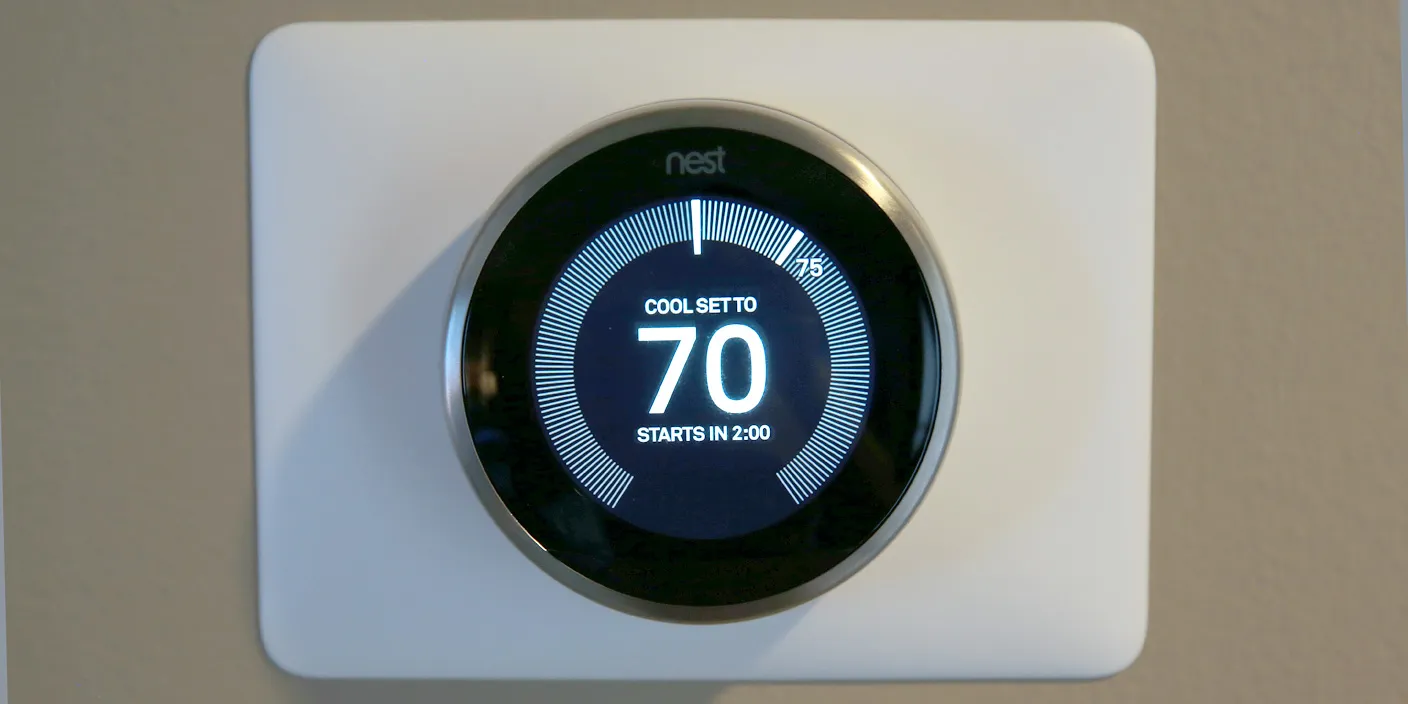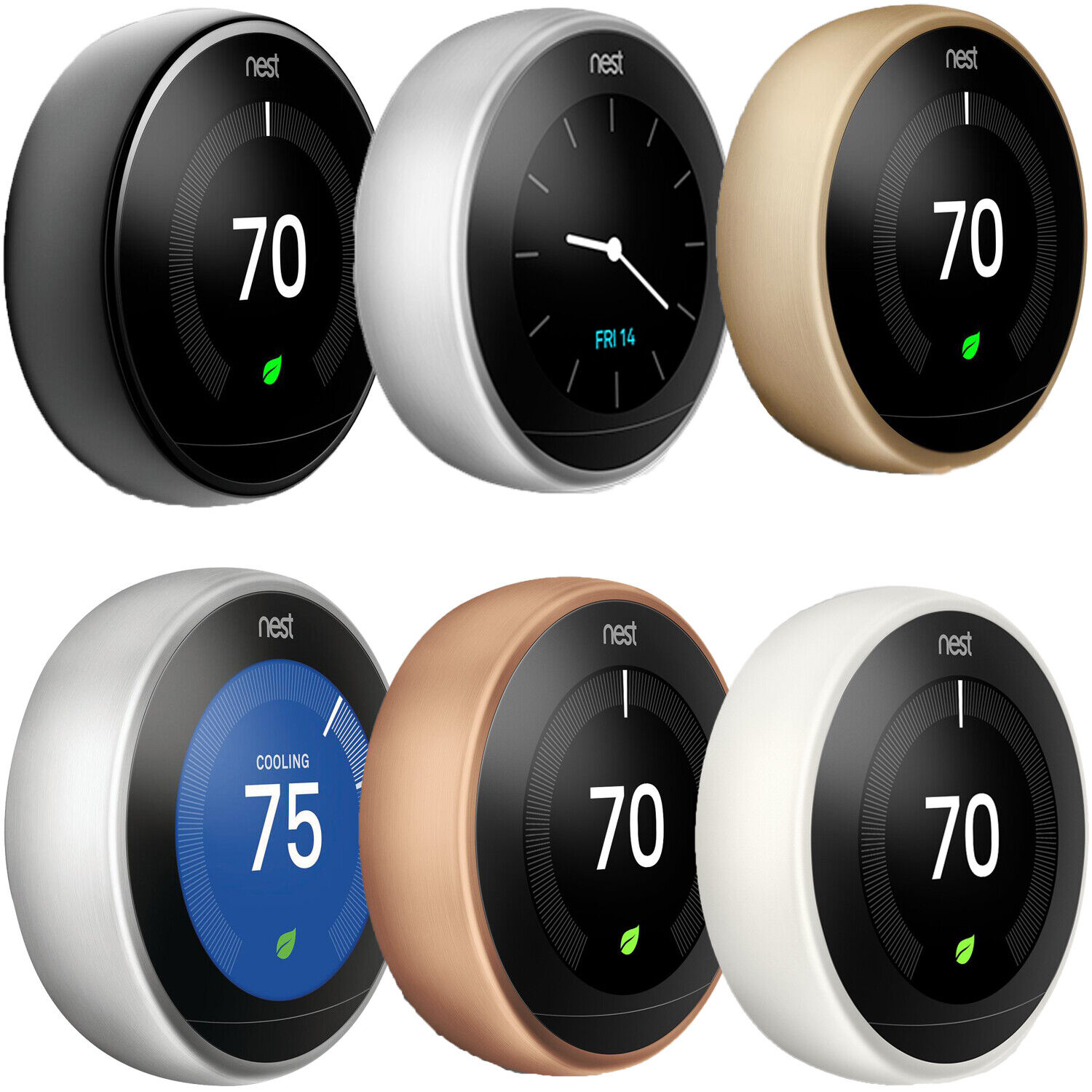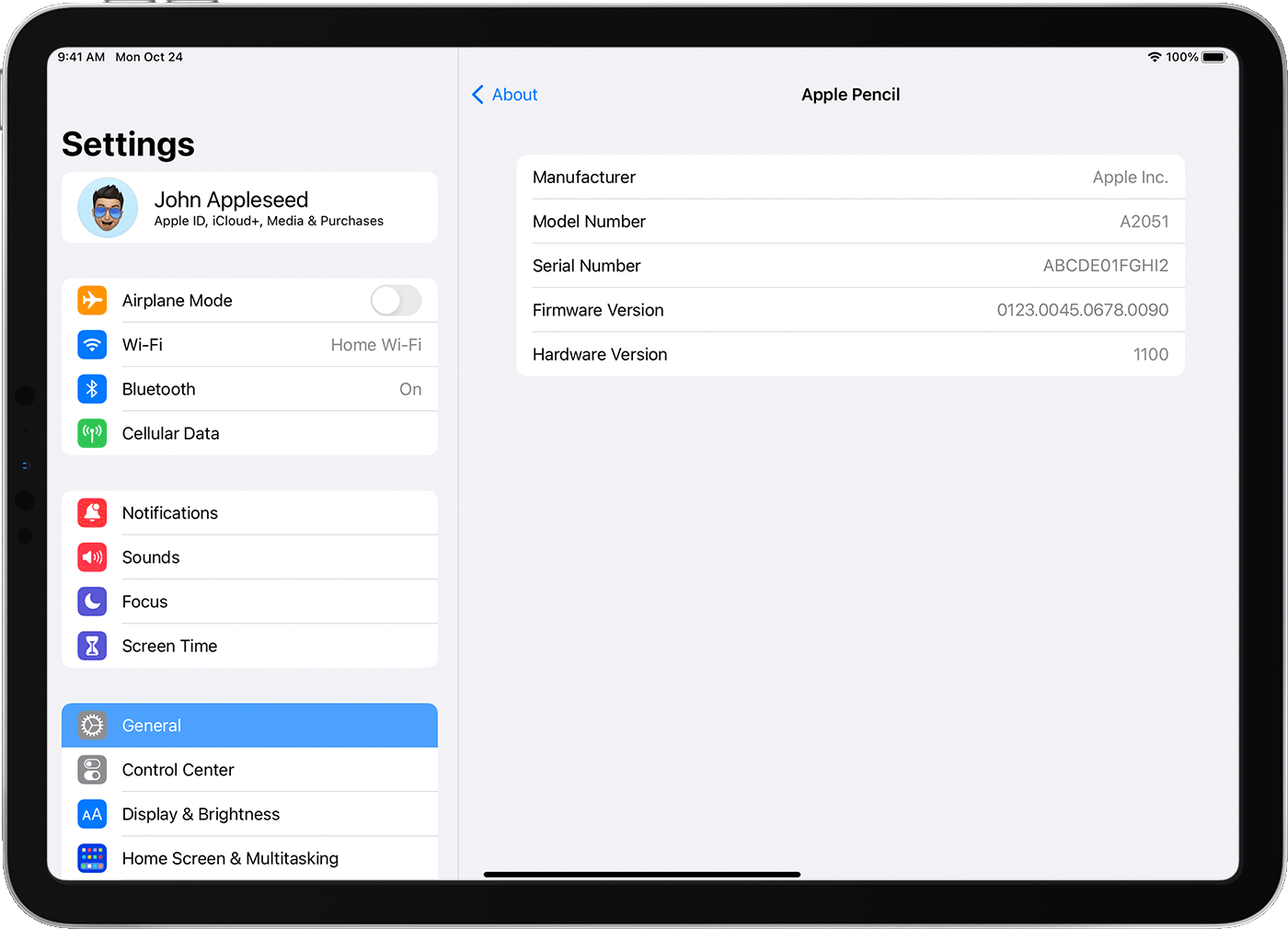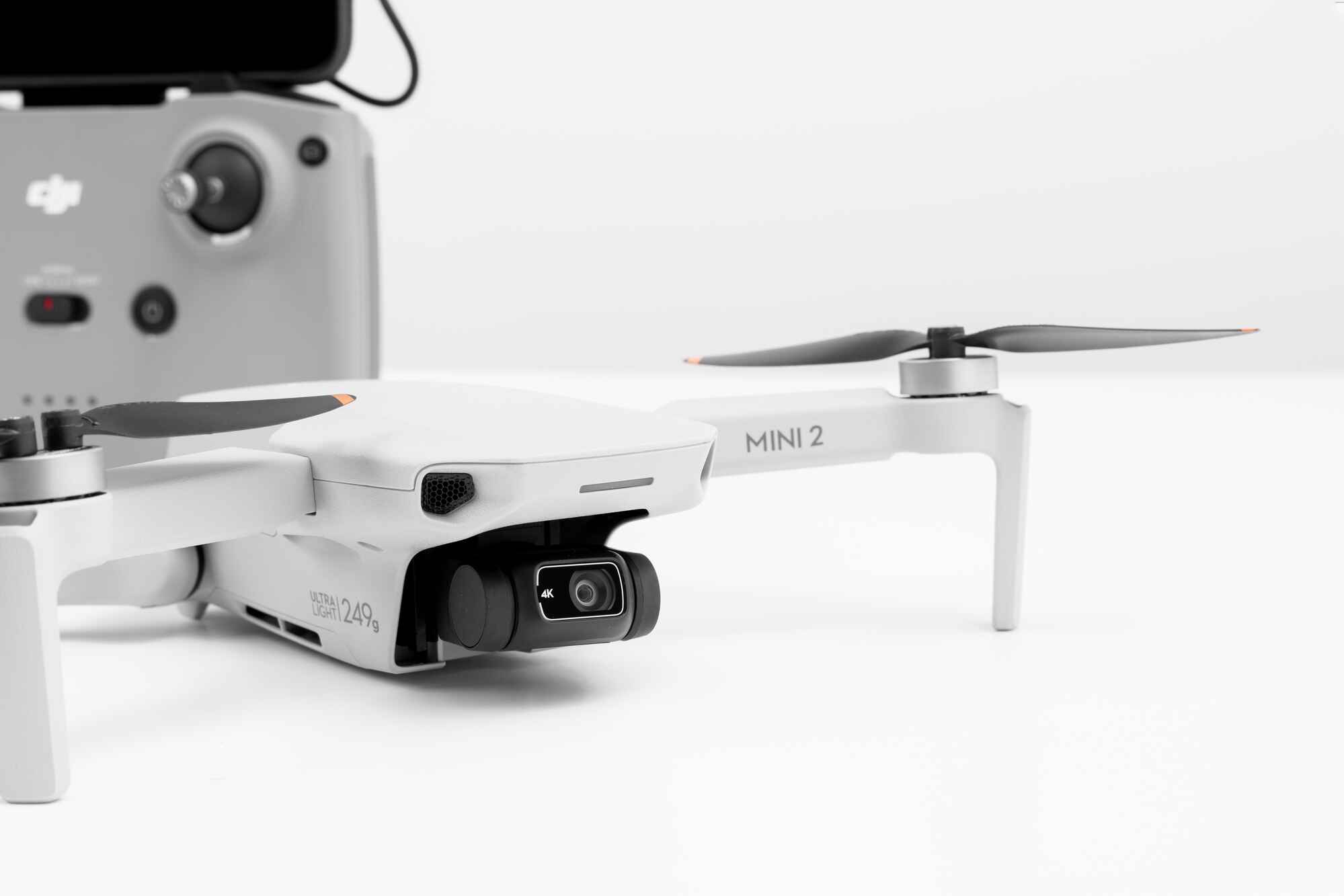Introduction
The advancement of smart home technology has revolutionized how we control and manage various aspects of our homes. One of the most popular and widely adopted smart devices is the smart thermostat, which offers efficient and intuitive control over heating and cooling systems. Among the top contenders in the market are the Nest smart thermostats, which come in different generations – 1st, 2nd, and 3rd. These innovative devices have garnered significant attention and praise for their sleek design, cutting-edge features, and energy-saving capabilities.
Over the years, Nest has continuously improved its smart thermostats, introducing new generations with enhanced functionalities and better performance. Each generation brings its own unique features and advancements, catering to different user preferences and requirements. In this article, we will delve into the differences between the 1st, 2nd, and 3rd generation Nest smart thermostats, helping you understand which one might be the best fit for your home.
Before diving into the specifics of each generation, it’s important to note that all Nest smart thermostats share some common traits. They are all designed to be user-friendly, allowing homeowners to easily control and monitor their home climate using either the Nest app or voice commands. Additionally, Nest thermostats are known for their ability to learn and adapt to your temperature preferences, optimizing energy usage and providing a comfortable living environment.
Now, let’s explore the key differentiating factors between each generation of Nest smart thermostats, including design, features, compatibility, energy efficiency, remote control options, learning abilities, integration with other smart home systems, and pricing. By the end of this article, you’ll have a clear understanding of the strengths and weaknesses of each generation, enabling you to make an informed decision when selecting the right Nest smart thermostat for your home.
Design and Display
The design and display of a smart thermostat play a crucial role in its usability and integration into your home. When comparing the 1st, 2nd, and 3rd generation Nest smart thermostats, there are noticeable differences in terms of aesthetics and screen technology.
The 1st generation Nest thermostat features a more angular design with a metal ring around the outer edge and a circular display in the center. The display is a basic black and white LCD screen, which provides clear and straightforward information about temperature, time, and settings. While the design may be considered more simplistic compared to later generations, it still blends well with various home aesthetics.
Moving on to the 2nd generation Nest thermostat, the design takes a more refined and modern approach. The display is larger and features a higher resolution compared to its predecessor. It adds a touch of elegance with its sleeker profile and rounded edges. The display uses a full-color LCD screen, allowing for enhanced visual feedback and a more engaging user experience. The 2nd generation Nest thermostat is available in multiple finishes, providing more options to match your home decor.
With the 3rd generation Nest thermostat, Nest took the design and display to another level. The device features a thinner profile and a larger, high-resolution display that seamlessly blends into its surroundings. The display utilizes a full-color LCD screen and comes with improved pixel density, resulting in crisp and vibrant visuals. The 3rd generation thermostat offers more customization options with various metal finishes to choose from, allowing homeowners to showcase their personal style.
In terms of usability, all three generations of Nest smart thermostats feature an intuitive user interface with a rotating control ring, making temperature adjustments as simple as turning a knob. The display provides easy-to-read information and intuitive menus for navigating the thermostat’s settings and features. The size and resolution of the display improve with each generation, ensuring a more immersive and user-friendly experience.
Overall, while the 1st generation Nest thermostat boasts a more straightforward design, the 2nd and 3rd generation models offer enhanced aesthetics and display technology. The 3rd generation thermostat, in particular, stands out with its thinner profile, larger screen, and customizable finishes, making it an attractive addition to any modern home decor.
Features and Capabilities
When it comes to features and capabilities, the 1st, 2nd, and 3rd generation Nest smart thermostats come packed with a range of functionalities designed to enhance energy efficiency, convenience, and overall user experience. Let’s explore the key features and capabilities of each generation.
Starting with the 1st generation Nest thermostat, it introduced the concept of learning thermostats. This means that the device gradually learns your temperature preferences and creates a schedule based on your daily patterns. It also features an Auto-Away function that detects when you’re not at home and adjusts the temperature accordingly, helping you save energy.
The 2nd generation Nest thermostat builds upon the intelligent features of its predecessor and introduces additional capabilities. It includes an added humidity sensor, allowing the thermostat to monitor indoor humidity levels and make adjustments to ensure optimal comfort. It also features enhanced compatibility with more HVAC systems, expanding its reach to a wider range of households.
With the 3rd generation Nest thermostat, Nest took their smart thermostat technology to the next level. One of the standout features of this generation is Farsight, which uses built-in sensors to detect your presence and display useful information, such as the current temperature or weather forecast, from a distance. This ensures that important information is always visible without needing to get close to the thermostat.
All three generations of Nest thermostats can be controlled remotely through the Nest app, allowing you to adjust the temperature and monitor your home’s climate from anywhere. Additionally, they are compatible with voice assistants, such as Google Assistant and Amazon Alexa, enabling you to use voice commands for temperature adjustments and other functions.
It’s worth noting that the 3rd generation Nest thermostat offers improved compatibility with multi-zone heating and cooling systems, making it an ideal choice for homes with multiple temperature zones. It also features geofencing technology, which uses your smartphone’s location to automatically adjust the temperature based on your proximity to home.
In summary, all three generations of Nest smart thermostats come equipped with advanced features and capabilities. While the 1st generation introduced the concept of learning thermostats, the 2nd and 3rd generations refined and expanded upon these features, offering enhanced compatibility, humidity sensing, remote control, and even built-in sensors for improved information display. Each generation offers unique functionalities, providing options that cater to different homeowner preferences and needs.
Installation and Compatibility
When it comes to installing a smart thermostat, it’s important to consider the ease of installation and compatibility with your existing HVAC system. Let’s explore how the 1st, 2nd, and 3rd generation Nest smart thermostats compare in terms of installation and compatibility.
The 1st generation Nest thermostat was designed to be user-friendly, making installation a relatively straightforward process. It comes with a step-by-step installation guide and accessories that help you connect the thermostat to your existing HVAC system. However, it’s worth noting that the 1st generation Nest thermostat has certain limitations in terms of compatibility, as it may not work with all HVAC systems. It’s essential to check the compatibility requirements and ensure that your system meets the necessary criteria before purchasing this generation.
The 2nd generation Nest thermostat improves on the installation process by offering more compatibility with a wider range of HVAC systems. It supports most low-voltage heating and cooling systems, including those with heat pumps. The installation process remains relatively straightforward, and Nest provides detailed instructions to guide you through the setup.
With the 3rd generation Nest thermostat, installation and compatibility have been further enhanced. It is compatible with almost all heating and cooling systems, including forced air, radiant, heat pump, and dual fuel systems. The installation process is similar to previous generations, and Nest continues to provide comprehensive instructions to assist homeowners.
In terms of compatibility with other smart home devices and systems, all three generations of Nest thermostats integrate seamlessly with various smart home platforms, including Google Home, Amazon Alexa, and Apple HomeKit. This allows you to control your thermostat using voice commands or through the respective smart home apps.
Another factor to consider is the availability of Nest Temperature Sensors, which enable temperature monitoring in different rooms. These sensors are compatible with both the 2nd and 3rd generation Nest thermostats, allowing for precise temperature control and energy optimization in each zone of your home.
In summary, while the 1st generation Nest thermostat had certain compatibility limitations, the 2nd and 3rd generations have expanded their compatibility with a wider range of HVAC systems, making installation more accessible for homeowners. Additionally, all three generations are compatible with popular smart home platforms and offer the option of Nest Temperature Sensors for enhanced temperature control.
Energy Saving and Cost Efficiency
One of the primary benefits of investing in a smart thermostat is the potential for energy savings and increased cost efficiency. Let’s examine how the 1st, 2nd, and 3rd generation Nest smart thermostats perform in terms of energy-saving features and cost efficiency.
The 1st generation Nest thermostat introduced the concept of learning and adapting to your temperature preferences. By learning your daily patterns and adjusting the temperature accordingly, it helps reduce energy consumption and minimize wastage. The Auto-Away feature, which detects when you’re not at home, ensures that energy is not being wasted on unnecessary heating or cooling. While the 1st generation offers significant energy savings compared to traditional thermostats, later generations have further improved upon this.
The 2nd generation Nest thermostat builds upon the intelligent features of its predecessor and introduces additional energy-saving capabilities. It includes an advanced learning algorithm that fine-tunes the temperature schedule based on your habits, creating more precise and efficient temperature control. It also monitors and adjusts humidity levels, optimizing both comfort and energy consumption. These features contribute to increased energy savings and can result in lower utility bills over time.
The 3rd generation Nest thermostat takes energy saving to the next level with features like Farsight and geofencing. The Farsight feature displays useful information from a distance, encouraging you to interact with the thermostat more frequently and make informed energy-saving decisions. The geofencing technology ensures that your home is at an efficient temperature when you’re near, and it adjusts accordingly when you’re away to save energy. These advancements, coupled with the learning capabilities and compatibility with multi-zone systems, make the 3rd generation Nest thermostat highly efficient in managing energy usage.
In addition to the energy-saving features, Nest provides detailed energy reports and suggestions for optimizing energy consumption through its app. These reports provide insights into your patterns and highlight areas where further adjustments can be made to save energy and reduce costs.
It’s important to note that each home and heating/cooling system is unique, so the actual energy savings may vary. However, many users have reported significant reductions in energy consumption and cost savings after upgrading to a Nest smart thermostat.
In summary, while the 1st generation Nest thermostat introduced the concept of energy-saving and adaptive temperature control, the 2nd and 3rd generations have built upon these capabilities, incorporating advanced learning algorithms, humidity sensing, and additional features like Farsight and geofencing. These advancements contribute to increased energy savings and enhanced cost efficiency, making the 2nd and 3rd generation Nest thermostats highly effective in reducing energy consumption and utility bills when compared to traditional thermostats.
Remote Control and Connectivity
One of the key advantages of a smart thermostat is the ability to control and monitor your home’s temperature remotely. Let’s explore how the 1st, 2nd, and 3rd generation Nest smart thermostats excel in terms of remote control and connectivity options.
The 1st generation Nest thermostat allows homeowners to control their thermostat remotely through the Nest app. With the app, you can adjust the temperature, create schedules, and monitor energy usage from anywhere using your smartphone or tablet. This level of remote control provides convenience and flexibility, ensuring that your home is always at the desired temperature when you arrive.
With the 2nd generation Nest thermostat, remote control options are further enhanced. In addition to the Nest app, this generation offers compatibility with smart home platforms like Google Home, Amazon Alexa, and Apple HomeKit. This integration allows you to control your Nest thermostat using voice commands through your preferred voice assistant, adding another layer of convenience and hands-free control.
The 3rd generation Nest thermostat takes remote control and connectivity to a whole new level. It builds upon the features of previous generations and adds additional connectivity options. In addition to the Nest app and integration with smart home platforms, it includes support for Nest Temperature Sensors, which enable temperature monitoring and control in different rooms of your home. This allows for more precise temperature settings and increased comfort throughout your living space. The 3rd generation also offers better range and connectivity, ensuring a stable connection between the thermostat and your home’s Wi-Fi network.
All three generations of Nest thermostats offer seamless connectivity in terms of software updates and support. Nest regularly provides software updates to improve performance, add new features, and address any potential security issues. This ensures that your Nest thermostat stays up-to-date with the latest advancements and offers the best user experience possible.
In summary, the 1st, 2nd, and 3rd generation Nest thermostats offer remote control through the Nest app, allowing you to adjust temperature settings and monitor energy usage from anywhere. The 2nd and 3rd generations take it a step further by offering compatibility with popular smart home platforms, enabling voice control through voice assistants. The 3rd generation also introduces support for Nest Temperature Sensors, providing more precise temperature control throughout your home. With regular software updates, Nest ensures that all generations of their thermostats remain connected and up-to-date, offering seamless connectivity and convenience to homeowners.
Learning Abilities and Adaptiveness
One of the standout features of the Nest smart thermostats is their ability to learn and adapt to your temperature preferences and daily routines. Let’s explore how the 1st, 2nd, and 3rd generation Nest thermostats excel in terms of their learning abilities and adaptiveness.
The 1st generation Nest thermostat introduced the concept of learning thermostats. Over time, it learns your temperature preferences and creates a schedule based on your daily patterns. By understanding when you’re typically at home or away, it adjusts the temperature accordingly to maximize energy savings. This learning capability allows for a more personalized and efficient temperature control experience.
The 2nd generation Nest thermostat builds upon the learning abilities of its predecessor. It features an advanced learning algorithm that fine-tunes the temperature schedule based on your habits, creating a more precise and adaptable temperature control system. This intelligence allows the thermostat to anticipate your heating and cooling needs, ensuring a comfortable environment while minimizing wastage and unnecessary energy consumption.
With the 3rd generation Nest thermostat, Nest took the learning abilities to the next level. It utilizes even more advanced algorithms to understand your behavior patterns and adapt to your unique preferences. Additionally, the 3rd generation introduces features like Farsight, which displays useful information from a distance, encouraging you to interact with the thermostat more frequently and make informed energy-saving decisions.
The learning abilities of Nest thermostats are not limited to just adjusting the temperature based on your patterns. They also adapt to changing seasons and weather conditions. For example, during summer, the thermostat learns how to optimize cooling to maintain a comfortable temperature, while in winter, it learns how to efficiently manage the heating system to keep your home warm without wasting energy.
It’s important to note that learning capabilities may vary depending on various factors, including user interaction and the consistency of daily routines. It may take some time for the thermostat to fully adapt and fine-tune its temperature schedule. However, with consistent use and the willingness to provide feedback to the thermostat through the mobile app, you can improve the learning effectiveness of your Nest thermostat.
In summary, all three generations of Nest smart thermostats possess learning abilities that allow them to adapt to your temperature preferences and daily routines. While the 1st generation introduced the concept of learning thermostats, the 2nd and 3rd generations built upon this foundation with more advanced algorithms and adaptiveness. The 3rd generation, in particular, adds features like Farsight to further engage homeowners and enhance the learning and energy-saving capabilities of the thermostat.
Integration with Other Smart Home Systems
Seamless integration with other smart home systems is an essential aspect to consider when choosing a smart thermostat. Let’s explore how the 1st, 2nd, and 3rd generation Nest smart thermostats excel in terms of compatibility and integration with other smart home devices and platforms.
The 1st generation Nest thermostat offers integration with various smart home platforms, allowing you to control and monitor your thermostat through third-party apps or devices. It is compatible with platforms like Google Home, Samsung SmartThings, and Amazon Alexa, enabling you to control your thermostat using voice commands or through the respective smart home apps. This integration adds convenience and flexibility to your smart home setup.
The 2nd generation Nest thermostat builds upon the integration capabilities of its predecessor. It continues to support popular platforms like Google Home, Amazon Alexa, and Apple HomeKit, allowing for seamless control and integration with your existing smart home devices. This compatibility enables you to create customized routines and control your thermostat alongside other smart devices in your home, enhancing the overall smart home experience.
The 3rd generation Nest thermostat takes integration with other smart home systems to the next level. Alongside compatibility with Google Home, Amazon Alexa, and Apple HomeKit, it offers enhanced compatibility with a wider range of devices and platforms. This includes integration with Z-Wave, Zigbee, and other smart home protocols, further expanding its compatibility with various smart home devices and systems. With this level of integration, you can create a centralized smart home ecosystem, effortlessly controlling your thermostat alongside lights, security systems, and other connected devices.
In addition to smart home platform integration, all three generations of Nest thermostats offer compatibility with Nest Temperature Sensors. These sensors allow for precise temperature control and monitoring in different rooms, enhancing the overall comfort and energy efficiency of your home. The sensors seamlessly integrate with the Nest thermostat, ensuring that each room is heated or cooled according to your preferences.
Nest also provides an open API, enabling developers to create custom integrations and connect the Nest thermostat with a wide range of smart home devices and platforms. This flexibility allows homeowners to customize their smart home setups according to their unique preferences and requirements.
In summary, all three generations of Nest thermostats offer compatibility with popular smart home platforms like Google Home, Amazon Alexa, and Apple HomeKit. The 2nd and 3rd generations further enhance compatibility with a wider range of devices and protocols, enabling seamless integration with various smart home devices and systems. With the availability of Nest Temperature Sensors and an open API, Nest thermostats provide the flexibility to create a personalized and fully integrated smart home ecosystem.
Pricing and Value for Money
When considering the purchase of a smart thermostat, pricing and value for money are crucial factors to consider. Let’s delve into the pricing options and the value provided by the 1st, 2nd, and 3rd generation Nest smart thermostats.
The 1st generation Nest thermostat, being the earliest model, is generally priced more affordably compared to the later generations. While it may lack some of the advanced features and improved display technology found in the newer models, it still offers reliable temperature control and energy-saving capabilities. For homeowners on a budget who still want to experience the convenience of a smart thermostat, the 1st generation Nest thermostat is a cost-effective choice.
The 2nd generation Nest thermostat commands a slightly higher price, reflecting the added features and improvements it offers. With the inclusion of features like humidity sensing and enhanced compatibility with various HVAC systems, the 2nd generation provides more value and versatility. It strikes a good balance between affordability and advanced functionalities, making it an appealing option for those seeking an upgrade without breaking the bank.
The 3rd generation Nest thermostat, being the latest and most advanced model, is understandably priced higher than its predecessors. It offers significant enhancements in terms of design, display technology, learning abilities, and integration capabilities. The improved visuals, compatibility with multi-zone systems, and support for Nest Temperature Sensors make the 3rd generation an excellent investment for homeowners who value the latest technology and comprehensive smart home integration.
Ultimately, the value for money provided by each generation of Nest thermostats depends on individual preferences and requirements. While the 3rd generation offers the most advanced features, some homeowners may find that the 1st or 2nd generation meets their needs at a more affordable price point. It’s important to consider the specific features and functionalities that are essential to you, as well as your budget, when making a decision.
Furthermore, it’s worth noting that Nest frequently provides software updates to all generations of their thermostats, ensuring that even older models continue to receive improvements and remain compatible with evolving technologies. This longevity of support adds value to the overall ownership experience by extending the lifespan and functionality of the device.
In summary, the 1st, 2nd, and 3rd generation Nest thermostats offer different pricing options to cater to various budgets. Each generation provides a range of features and capabilities that offer value for money. While the 3rd generation offers the most advanced technology and comprehensive integration, the 1st and 2nd generations still deliver efficient temperature control and energy savings at more affordable prices. Ultimately, the choice depends on individual needs, preferences, and budget considerations when evaluating the value provided by each generation of Nest smart thermostats.
Conclusion
Choosing the right smart thermostat for your home is an important decision that can significantly impact your comfort, energy savings, and overall smart home experience. The 1st, 2nd, and 3rd generation Nest smart thermostats offer a range of features and capabilities, catering to different preferences and needs. Here’s a summary of our findings:
In terms of design and display, the 2nd and 3rd generation Nest thermostats outshine the 1st generation with their sleeker profiles, larger and higher-resolution displays, and customizable finishes.
When it comes to features and capabilities, all three generations excel in providing energy-saving functionalities and convenience. However, the 2nd and 3rd generations offer additional advancements, such as humidity sensing, improved compatibility, and features like Farsight and geofencing for a more personalized and adaptable experience.
Installation and compatibility have been improved across all generations, with the 3rd generation offering the broadest compatibility with various HVAC systems and integration with other smart home platforms.
In terms of energy saving and cost efficiency, all generations of Nest thermostats provide significant benefits compared to traditional thermostats. However, the 2nd and 3rd generations offer more advanced features and learning capabilities, resulting in enhanced energy savings and increased cost efficiency.
Remote control and connectivity options are available in all three generations, allowing you to control and monitor your thermostat from anywhere. The 2nd and 3rd generations provide increased compatibility with popular smart home platforms and the option to integrate Nest Temperature Sensors for precise temperature control.
The learning abilities and adaptiveness of Nest thermostats improve with each generation, with the 3rd generation introducing advanced algorithms, features like Farsight, and enhanced responsiveness to user behavior and environmental changes.
Lastly, the pricing and value for money vary across the generations, with the 1st generation being more affordable, the 2nd generation offering a balance between affordability and advanced features, and the 3rd generation providing the latest technology and comprehensive smart home integration.
In conclusion, the choice between the 1st, 2nd, and 3rd generation Nest smart thermostats ultimately depends on your specific needs, budget, and preferences. Whether you are looking for a cost-effective option, advanced features, or comprehensive smart home integration, Nest offers a range of options to enhance your home’s comfort, energy efficiency, and convenience. Consider the key factors discussed in this article and select the Nest smart thermostat that best suits your requirements for a seamless and intelligent heating and cooling experience.

























